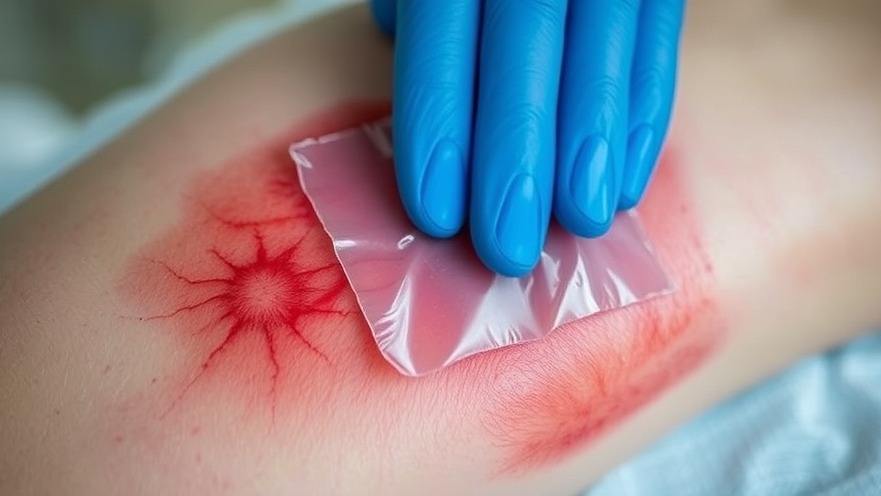
The Future of Burn Treatment: Harnessing Bacterial Cellulose
In a groundbreaking study published in Advanced Materials, a research team has developed an innovative dressing using bacterial cellulose (BC), designed specifically to enhance hemostasis in burn wound management. This advancement promises to tackle the persistent challenge of bleeding control during burn surgery, which is crucial given the traumatic nature of such injuries.
Understanding Bacterial Cellulose: A Game Changer in Wound Care
Bacterial cellulose has garnered attention for its unique properties, such as high mechanical strength, microporosity, and breathable nature. Unlike traditional dressings, BC is biocompatible, making it suitable for various wound care applications. However, its lack of intrinsic hemostatic properties limits its effectiveness in complex wounds, prompting researchers to find innovative solutions.
The Thrombin-Anchored Dressing: What Sets It Apart?
The study introduces a novel composite dressing, referred to as thrombin-anchored BC (T-BC). This new dressing is engineered by attaching human-derived thrombin to the bacterial cellulose matrix via a specialty cellulose-binding domain (CBD). The result is a dressing that maintains the desirable attributes of BC while enhancing its ability to control bleeding effectively and promote healing.
Clinical Insights: The Performance of T-BC Dressings
In clinical trials using a rat liver incision model, the T-BC dressing demonstrated incredibly rapid hemostatic capabilities, achieving effective bleeding control within just one minute. This contrasts sharply with conventional materials, which often take much longer to achieve similar results. Furthermore, when applied to simulated deep second-degree burn wounds, the T-BC-treated wounds showed a remarkable 40% improvement in healing rates after merely five days, illustrating the superior biological efficiency of this innovative dressing.
How T-BC Enhances Wound Healing: The Mechanism Uncovered
Beyond its coagulation properties, T-BC has been shown to promote wound healing through a multi-dimensional approach. Genetic analyses indicated that the dressing boosts neovascularization, effectively modulates the body’s inflammatory response, and supports the reconstruction of skin tissue architecture. This triad of benefits positions T-BC as a transformative tool in managing burn injuries, ensuring not just faster closure, but also improved quality of healing.
Conclusion: A New Era in Wound Management
The advancement of T-BC dressings is a testament to the importance of integrating biotechnology into clinical practice. By combining proven materials with innovative engineering, healthcare practitioners can provide better patient outcomes in burn treatment. As a concierge health practitioner, staying informed about such developments is pivotal not just for improving patient care but also for remaining competitive in a rapidly evolving medical landscape.
Transforming burn wound management is not merely about quick fixes but about implementing comprehensive solutions that enhance recovery and improve the quality of life for patients. Consider integrating these innovative solutions into your practice to provide the highest standard of care for your patients.
 Add Row
Add Row  Add
Add 




Write A Comment